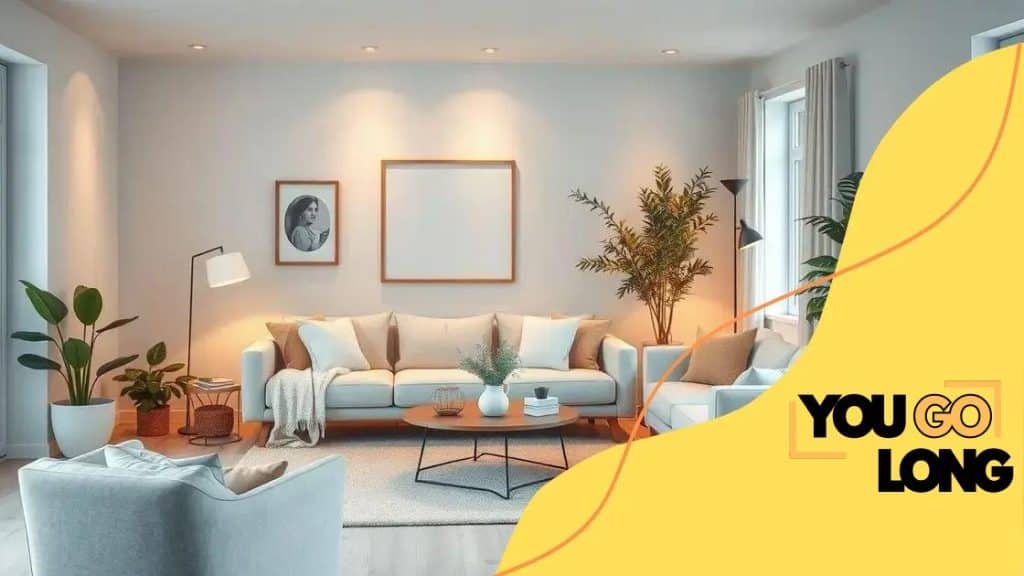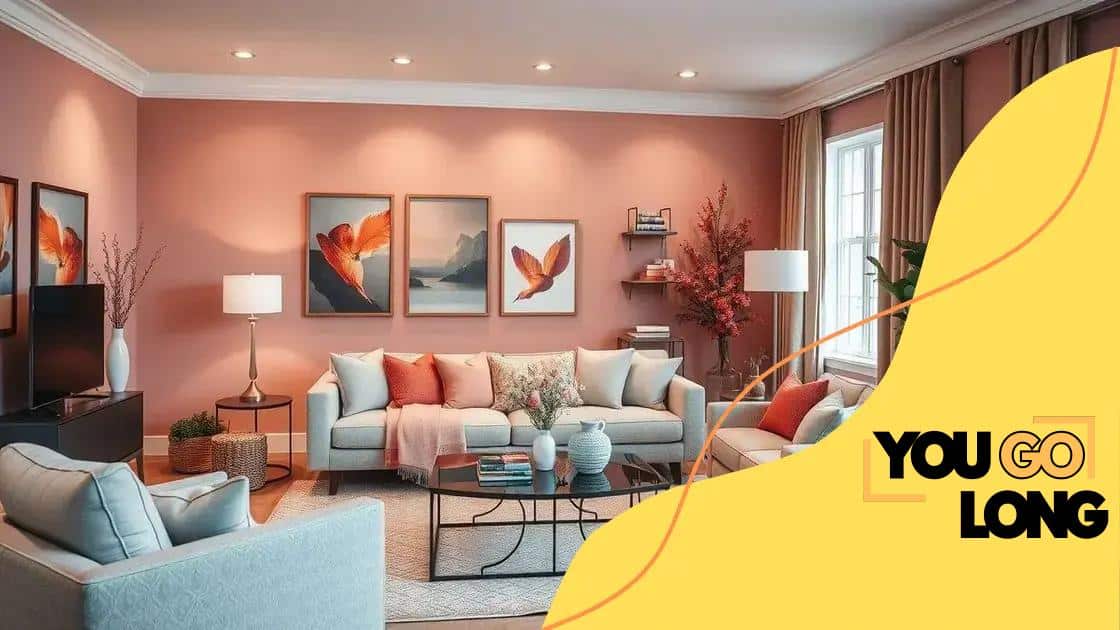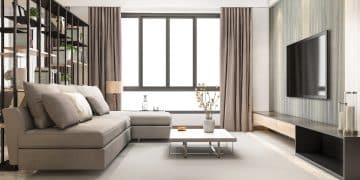Color schemes for creating a calming home atmosphere

Advertisement
Color schemes for creating a calming home atmosphere involve selecting soothing colors, such as light blues and greens, and applying principles like the 60-30-10 rule to enhance relaxation and harmony in your space.
Color schemes for creating a calming home atmosphere play a crucial role in how we feel in our spaces. Have you ever noticed how certain colors can lift your mood or make you feel more relaxed? Let’s explore which palettes can transform your home into a sanctuary.
Understanding color psychology
Understanding how colors affect our emotions and behaviors is essential for creating a peaceful home environment. Color psychology reveals that different shades can evoke specific feelings and responses. For instance, blues are often associated with calmness, while yellows may bring joy and energy. This knowledge allows us to choose wisely when selecting colors for our spaces.
How colors impact our mood
Each color has its unique vibe. For example, green symbolizes nature and is known for its refreshing qualities. This makes it a great choice for rooms where you want to feel rejuvenated. Similarly, neutrals like beige or gray offer a soothing backdrop that can help reduce stress.
Advertisement
Choosing the right colors
When designing your home, consider these factors:
- Lighting: Natural light can change how a color looks.
- Room purpose: Think about what activities will happen in each space.
- Personal preferences: Always include colors you love for a space that feels like home.
By understanding color psychology, you can create an atmosphere that promotes relaxation and comfort. Remember, the goal is to select hues that resonate with your personal style while also fostering tranquility in your living areas. Using different shades can also harmonize spaces, leading to a coherent feel throughout your home.
Best colors for relaxation
Choosing the best colors for relaxation can significantly enhance your home’s atmosphere. Certain hues have calming effects that can reduce stress and create a peaceful environment. For example, soft blues and greens are often preferred for their tranquil qualities and ability to mimic nature.
Advertisement
Top colors for relaxation
Consider incorporating these colors into your living spaces to promote relaxation:
- Light Blue: Evokes the sky and sea, creating a sense of peace.
- Soft Green: Associated with nature, it can refresh your mind and body.
- Lavender: Known for its soothing effect, it can help ease tension.
- Warm Neutrals: Colors like beige and taupe add warmth without overwhelming.
It’s important to think about how these shades affect mood and how they can be combined for maximum effect. For instance, pairing soft blue walls with warm beige accents can create a serene and inviting space. Additionally, accents in muted lavender can further enhance the calming ambiance.
Utilizing these relaxing colors throughout your home can transform your environment into a personal sanctuary. The key is to experiment with different combinations and find what resonates best with you.
Combining hues for harmony

Combining hues for harmony in your home can create a visually pleasing environment that fosters a sense of peace. Using complementary colors helps ensure that different spaces feel balanced and cohesive. Colors that work well together can elevate the mood and create a serene atmosphere.
Key principles of color harmony
When thinking about combining hues, keep these principles in mind:
- Complementary Colors: Pairs of colors that are opposite each other on the color wheel, such as blue and orange, create vibrant contrasts.
- Analogous Colors: Colors that are next to each other, like yellow, yellow-green, and green, offer a soothing and unified look.
- Monochromatic Schemes: Using variations of a single color can add depth while maintaining harmony.
To achieve a harmonious look, consider how colors interact in natural light. For example, a soft yellow that looks bright in daylight may be too overpowering in low light. It’s essential to test colors in the space to see how they truly feel. You might find that adding accents of darker shades can ground the lighter tones and enhance the overall harmony.
Additionally, don’t be afraid to add texture and patterns when combining hues. Fabrics like soft throw pillows or rugs can enhance the color scheme and create a layered effect. Mixing colors with different textures can make a space feel more inviting and dynamic while still maintaining harmony.
Accent colors that soothe
Accent colors that soothe can play a vital role in enhancing the overall ambiance of your space. These colors complement the main palette and add depth without overwhelming the senses. Selecting the right accent colors can create a calming and inviting atmosphere.
Choosing the right accent colors
When considering soothing accent colors, think about combinations that offer subtle contrasts. Here are some effective options:
- Pale Pink: This soft hue can bring warmth and comfort without being overpowering.
- Mist Gray: It adds a cool tone that can calm and balance brighter colors.
- Navy Blue: This deep hue pairs well with lighter shades and adds sophistication while providing tranquility.
- Soft Lilac: A gentle and pretty option that can enhance relaxation in any room.
Incorporating these soothing accents can be done through various elements like throw pillows, art pieces, or decorative vases. For instance, imagine a light blue room complemented by soft lilac curtains and navy blue cushions. This combination creates a harmonious and tranquil space that is easy on the eyes.
Moreover, utilizing different textures along with these colors can enhance the overall look. Think of velvet cushions or knitted throws in soothing colors; they add a tactile dimension that invites relaxation. Mixing and matching textures while keeping the color scheme cohesive is key to achieving warmth and comfort in your living space.
Tips for applying color schemes
Applying color schemes effectively can transform any space into a soothing retreat. Using the right methods can enhance your home’s atmosphere and create a sense of harmony. Here are some practical tips to keep in mind.
Start with a Focal Point
Identifying a focal point in a room helps guide your color choices. This could be a piece of furniture, an artwork, or even a wall. Once you’ve selected your focal point, build your color scheme around it. For instance, if your focal point is a vibrant painting, choose colors from that piece to complement it.
Use the 60-30-10 Rule
The 60-30-10 rule is a simple way to balance colors in any space. This rule suggests that:
- 60% of the room should be the dominant color.
- 30% of the room should be the secondary color.
- 10% of the room should be an accent color.
Following this guideline ensures that the room feels cohesive and well-thought-out. It avoids overwhelming any single color while ensuring diversity in the scheme.
Test Colors in Different Lights
Colors can look different depending on the lighting. Always test your chosen colors in the space where they will be used. For example, a soft yellow may appear bright and cheery in daylight but can seem dull in the evening. Place swatches on the walls and observe them at different times throughout the day.
Finally, remember to have fun with your color selections! Don’t be afraid to experiment with different combinations until you find what works best for your style. By applying these tips, you can create a beautifully harmonious environment that truly reflects your personality.
FAQ – Frequently Asked Questions about Color Schemes for a Calming Home Atmosphere
What are color schemes and why are they important for home decor?
Color schemes are combinations of colors used in a space to create mood and harmony. They are crucial for home decor as they can influence emotions and overall ambiance.
How can I choose the right colors for relaxation in my home?
Choose soft, muted colors like light blue, green, or lavender that are known to evoke calmness and comfort, avoiding overly bright or harsh colors.
What is the 60-30-10 rule in color schemes?
The 60-30-10 rule suggests using 60% of a dominant color, 30% of a secondary color, and 10% as an accent color to maintain balance in a room.
How can I test colors effectively before applying them?
Test colors by painting small swatches on the walls and observe them at different times of day to see how lighting affects their appearance.





